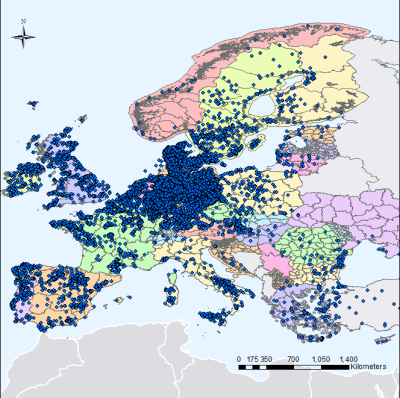There appears to be no shortage of reasons to hate on wind farms. That’s especially the case if you live close by one, and as studies have shown, their general acceptance indeed grows with their distance. Whatever your favorite flavor of renewable energy might be, that’s at least something it has in common with nuclear or fossil power plants: not in my back yard. The difference is of course that it requires a lot more wind turbines to achieve the same output, therefore affecting a lot more back yards in total — in constantly increasing numbers globally.
Personally, as someone who encounters them occasionally from the distance, I find wind turbines mostly to be an eyesore, particularly in scenic mountainous landscapes. They can add a futuristic vibe to some otherwise boring flatlands. In other words, I can not judge the claims actual residents have on their impact on humans or the environment. So let’s leave opinions and emotions out of it and look at the facts and tech of one issue in particular: light pollution.
This might not be the first issue that comes to mind when thinking about wind farms. But wind turbines are tall enough to require warning lights for air traffic safety, and can be seen for miles, blinking away in the night sky. From a pure efficiency standpoint, this doesn’t seem reasonable, considering how often an aircraft is actually passing by on average. Most of the time, those lights simply blink for nothing, lighting up the countryside. Can we change this?
Light On Demand
Improving warning lights to light up only when there’s an actual aircraft to warn in its vicinity isn’t a new idea, and individual tests to achieve this have been successfully carried out in the past. Looking at the map of wind farms in Europe, it’s not too surprising that Germany is especially interested in this subject, and is now implementing new regulations to enforce an on-demand warning light system as requirement for wind farms, expected to come into affect this summer.
Generally speaking, there are two options to know about an object in the sky within a wind turbine’s surroundings:
- the turbine is looking for an aircraft in the sky
- the aircraft reports its presence to the turbine
Established technologies exist for both options in form of radar and transponder signals respectively.
Radar
To simplify the basic concept of radar: radio waves are emitted into the wild, and if there is anything in their way, they bounce back to be received again, making it possible to determine the presence and distance of an object. Repeat it in a constant manner, and that object’s angle and velocity can be determined as well.
Like anything else in technology, radar systems have vastly improved and changed over time, and using Active Electronically Scanned Array (AESA) antennas nowadays, they can not only track multiple objects at once, but also look a lot more …read more
Source:: Hackaday

